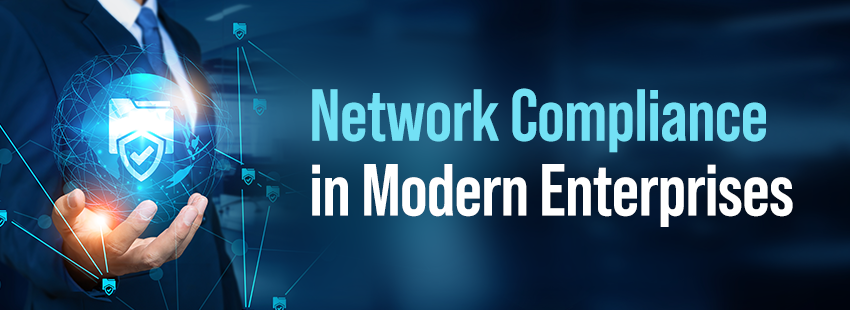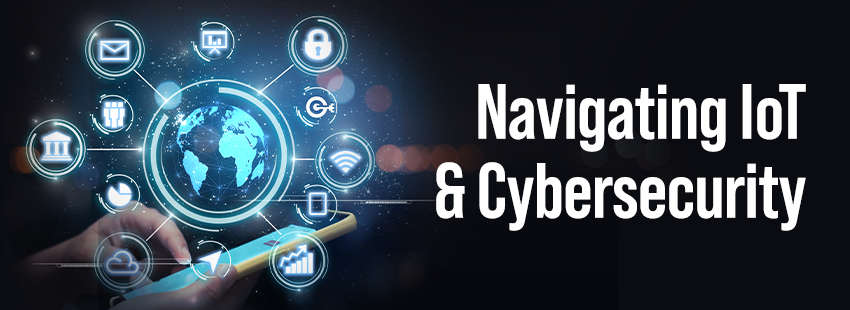Network Compliance in Modern Enterprises
Enterprises face challenges such as the surge in data, the prevalence of remote work, and the growing complexity of cyber threats. Organizations must proactively prepare for and demonstrate network compliance to safeguard assets and retain stakeholder trust.
The Importance of Network Compliance
Network compliance refers to adhering to rules, regulations, and standards to ensure an organization’s network infrastructure operates securely and efficiently. Compliance is not merely a box to be checked; it is a strategic imperative that can impact an enterprise’s reputation, financial stability, and legal standing.
Regulatory Landscape:
Modern enterprises operate in a complex regulatory environment. Depending on the industry, specific regulations such as GDPR, HIPAA, or PCI DSS mandate strict controls over how data is handled and stored. Failing to comply with these regulations can result in severe consequences, including hefty fines and legal action.
Data Security:
Network compliance is closely tied to data security. As cyber threats become more sophisticated, ensuring sensitive information’s confidentiality, integrity, and availability is paramount. A breach compromises data and can lead to a loss of customer trust and damage the enterprise’s brand.
Operational Efficiency:
Compliant networks are more likely to be efficient and resilient. Adhering to industry standards and best practices can streamline operations, reduce downtime, and enhance overall network performance. This, in turn, positively impacts the productivity and satisfaction of both employees and customers.
Steps to Prepare for Network Compliance
Conduct a Compliance Audit:
Begin by conducting a thorough audit of the existing network infrastructure. Identify potential compliance gaps by comparing the current state of the network against relevant regulations and standards. This audit should encompass both technical aspects, such as security protocols and data encryption, and procedural aspects, including access controls and incident response plans.
Document Policies and Procedures:
Clear documentation of network policies and procedures is a fundamental step in ensuring compliance. Define roles and responsibilities, document security protocols, and establish a comprehensive set of guidelines that align with industry regulations. Regularly update this documentation to adapt to changing compliance requirements and evolving organizational needs.
Implement Security Measures:
Strengthening network security is a continuous process. Employ robust firewalls, intrusion detection systems, and encryption protocols to safeguard sensitive data. Regularly update and patch software to address vulnerabilities promptly. Consider implementing multifactor authentication to add an extra layer of protection.
Employee Training:
Employees are often the weakest link in network security. Conduct regular training sessions to educate staff on compliance policies, security best practices, and the importance of adhering to established protocols. Foster a culture of cybersecurity awareness to empower employees to recognize and report potential threats.
Regular Compliance Monitoring:
Network compliance is not a one-time effort; it requires continuous monitoring. Implement tools and processes to assess the network’s compliance status regularly. Automated monitoring systems can provide real-time insights, enabling proactive identification and resolution of potential issues.
Proving Network Compliance
Documentation and Reporting:
Maintain comprehensive records of compliance measures, audits, and corrective actions taken. This documentation serves as tangible evidence of the organization’s commitment to compliance. Regularly generate compliance reports to give stakeholders a transparent view of the network’s status.
Third-Party Audits:
Engage third-party auditors to assess your network’s compliance independently. External validation adds credibility to compliance claims and assures stakeholders that the organization is committed to upholding industry standards. The results of these audits can also highlight areas for improvement.
Incident Response and Reporting:
In a security incident, having a well-defined incident response plan is crucial. Promptly report incidents to the relevant authorities, as required by regulations. A swift and transparent response demonstrates the organization’s commitment to mitigating risks and protecting sensitive information.
Continuous Improvement:
Demonstrating an ongoing commitment to compliance involves a commitment to continuous improvement. Regularly review and update policies and procedures in response to changing regulatory landscapes or emerging threats. Engage in post-incident analyses to identify areas for improvement and implement corrective actions.
In conclusion, modern enterprises must navigate the complex terrain of network compliance to safeguard their digital assets and maintain the trust of stakeholders. Organizations can build a resilient network infrastructure that aligns with industry standards and regulatory requirements by proactively preparing for compliance through audits, documentation, and security measures and by proving compliance through transparent reporting and continuous improvement. In the digital age, network compliance is not just a legal obligation; it is a strategic imperative ensuring modern enterprises’ long-term success and sustainability. Contact us for more information.





